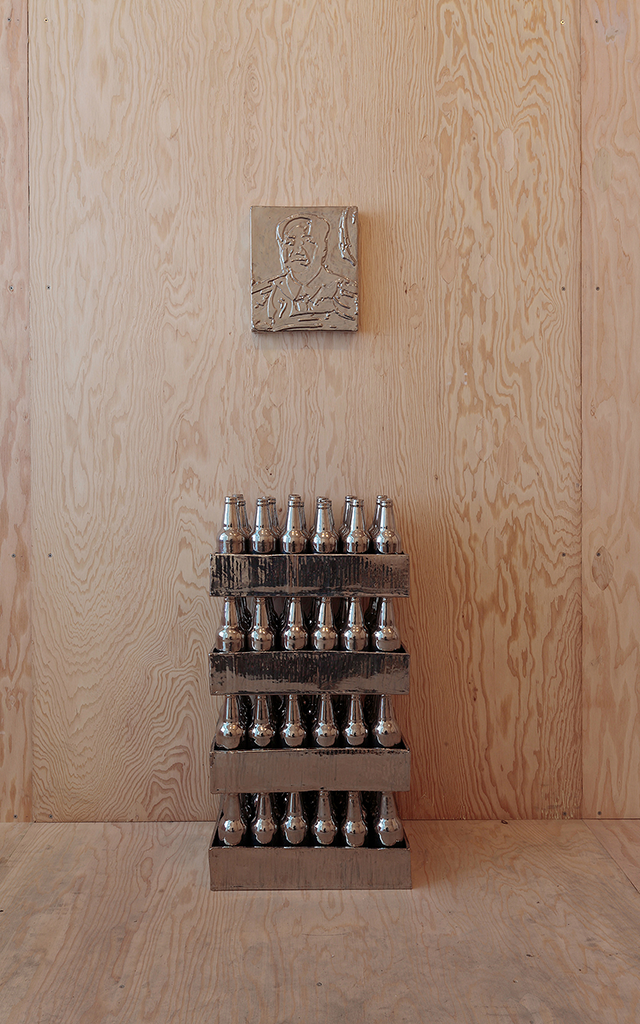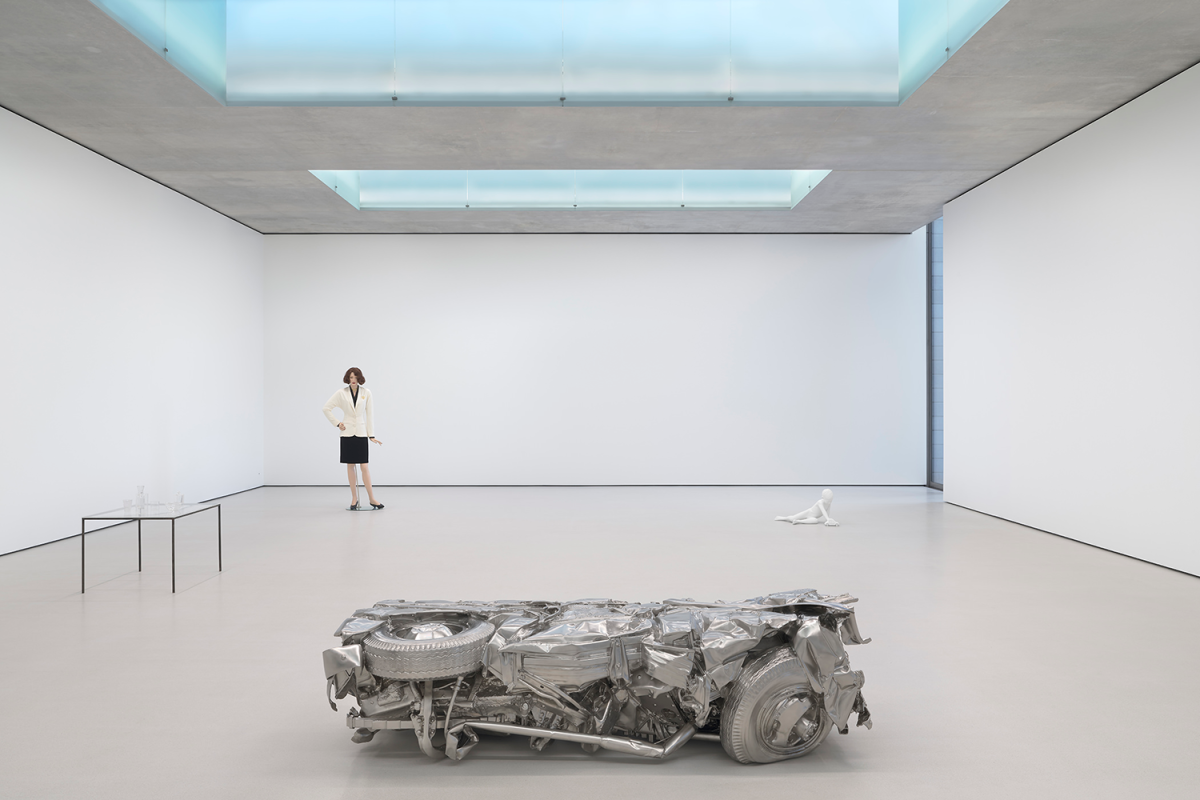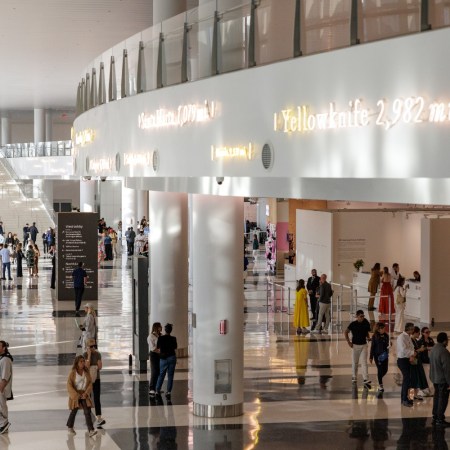True art lovers know that the gallery scene in DC isn’t just limited to the Smithsonians — all around the city there are quality collections worth an afternoon of strolling and chin-stroking. The small The Fridge DC in Eastern Market hosts stencil and spray-paint workshops, while Dupont Underground, the abandoned tunnelway below the iconic traffic circle, now functions as an immersive art space with events and rotating exhibits. The Phillips Collection, also just off Dupont, hosts an impressive collection of modern art from big names like Monet and O’Keefe to lesser-known contemporary artists.
Those looking for a real artistic immersion, though, know that it’ll require just a bit of a drive. Glenstone Museum is a privately funded museum and gardens curated by Emily Wei Rales and Mitchell P. Rales, just about a 45-minute journey outside of the city by car.
First established in 2006, the grounds now also include a new 204,000-square-foot museum building called the Pavilions in addition to their original 30,000-square-foot museum building, which is full of modern and contemporary art in all forms. The outdoor space is even more extensive, featuring nearly 300 acres of landscaped grounds that incorporate installations of major works of outdoor sculpture. Expect your visit — which needs to be booked online (and usually well in advance) — to be an all-day affair.
Additionally, in the spirit of highlighting under-the-radar galleries worth your time and attention, we also put together a list of some of the lesser-known artists whose work you’ll find at Glenstone. These artists aren’t newbies by any means — the Raleses have a “15-year-rule” that states they don’t collect an artist unless they’ve been actively exhibiting their work for at least that amount of time — but they are artists whose unique, iconic works warrant wider recognition.
So gas up the tank and get to recognizin’.

Rirkrit Tiravanija
A contemporary Thai artist who was born in Buenos Aires but grew up all over the world, Rirkrit Tiravanija is known for work that facilitates community between the audience and their surroundings — a movement he helped pioneer called “Relational Aesthetics.” You can catch his FEAR EATS THE SOUL exhibit at Glenstone, which “blurs the boundaries between art and life” by offering interactive activities such as a soup kitchen serving recipes provided by the artist, a silk-screening T-shirt workshop, a facsimile of the artist’s first one-person gallery show in New York installed with ceramic sculptures, and the words FEAR EATS THE SOUL spray-painted directly on a Gallery wall in characters that will be obscured over time under layers of graffiti by local artists.

Shirin Neshat
Shirin Neshat is an Iranian visual artist who explores the relationship between women and the religious and cultural value systems of Islam through the mediums of photography, video and film. Rather than making an overt political statement, Neshat has stated that she wants her viewers to “take away with them not some heavy political statement, but something that really touches them on the most emotional level.” Her exhibit at Glenstone is a black-and-white video captured in 1998 called Turbulent, opening November 14. The installation takes up both walls of a room, juxtaposing a male singing to an all-male audience and a female performing for an empty room — a striking reminder of the restrictions placed on women in Iran.

Charles Ray
Contemporary sculptor Charles Ray is known for his life-size fiberglass figures and monumental wood carvings. His signature style takes seemingly normal subjects and makes small but impactful shifts that provoke thought and can sometimes slightly perturb the viewer. Born in Chicago in 1953, Ray has been creating sculptural works for decades that tend to feature themes of boyhood, sleep, self-portraiture, ghosts and American pop culture. He has multiple works on view at Glenstone, such as a solid stainless steel sculpture called Baled Truck and a plexiglass and steel work simple called Table.

Robert Gober
An icon in the sculpting world, Robert Gober is known for his meticulous representations of everyday objects like sinks, cribs and body parts. His work, which has been on exhibition at estimable museums like London’s Tate Modern and our own Hirschhorn, investigate politics, sexuality and a host of other quote-unquote Big Issues. His current exhibition at Glenstone, Untitled, 1992, is a “room-scale, multisensory presentation made up of diverse components: darkened exterior pathways, a brightly lit interior chamber with walls covered by a hand-painted, 360-degree mural of a forest, sinks with running water mounted on the walls, and multiple ‘prison windows,’ forged iron bars through which a view of a painted sky is visible. Strewn about the room’s floor are piles of newspapers and boxes of rat bait.”

Roni Horn
Roni Horn is a contemporary artist working across many mediums, from text-based sculptures to rubber floor installations to photographic exhibitions. Her work addresses issues of gender and identity, and is oftentimes inspired by the geology of Iceland’s unique landscape. Her installation of Water Double is currently on view at Glenstone; the sculpture is considered by the artist to be one of her greatest achievements. Years of research and experimentation led to the fabrication of the clear glass and matte black forms on view at the gallery. Horn’s power lies in her ability to work with such a wide breadth of media and make them uniquely her own.
This article was featured in the InsideHook DC newsletter. Sign up now for more from the Beltway.


















